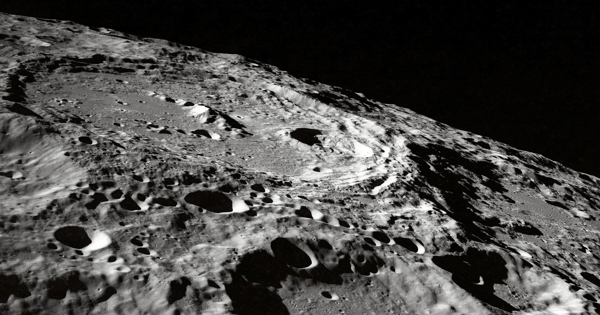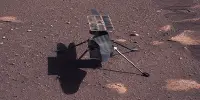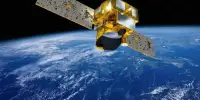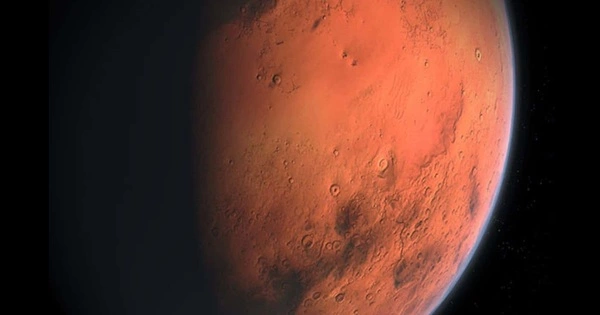To date, humans who have ventured into space have relied solely on equipment and supplies brought from Earth. This strategy is unquestionably appropriate for operations in Earth orbit or for brief stays on the Moon’s surface. However, the ability to use local resources effectively, to “live off the land,” will be critical for long-term human habitation of the Moon and planets.
Scientists from China report in the journal Joule that soil on the moon contains active compounds that can convert carbon dioxide into oxygen and fuels. They are currently investigating whether lunar resources can be used to aid human exploration of the moon and beyond.
Nanjing University material scientists Yingfang Yao and Zhigang Zou hope to design a system that takes advantage of lunar soil and solar radiation, the two most abundant resources on the moon. After analyzing the lunar soil brought back by China’s Chang’e 5 spacecraft, their team found the sample contains compounds — including iron-rich and titanium-rich substances — that could work as a catalyst to make desired products such as oxygen using sunlight and carbon dioxide.
We use in-situ environmental resources to minimize rocket payload, and our strategy provides a scenario for a sustainable and affordable extraterrestrial living environment.
Yingfang Yao
Based on their findings, the researchers proposed an “extraterrestrial photosynthesis” strategy. The system primarily employs lunar soil to electrolyze water extracted from the moon as well as water in astronauts’ breathing exhaust into oxygen and hydrogen powered by sunlight. During a hydrogenation process catalyzed by lunar soil, carbon dioxide exhaled by moon inhabitants is also collected and combined with hydrogen from water electrolysis.
The process produces hydrocarbons like methane, which can be used as fuel. According to the researchers, the strategy uses only sunlight to produce a variety of desirable products such as water, oxygen, and fuel that could support life on a moonbase. The team is looking for a chance to test the system in space, most likely as part of China’s future crewed lunar missions.
“We use in-situ environmental resources to minimize rocket payload, and our strategy provides a scenario for a sustainable and affordable extraterrestrial living environment,” Yao says.
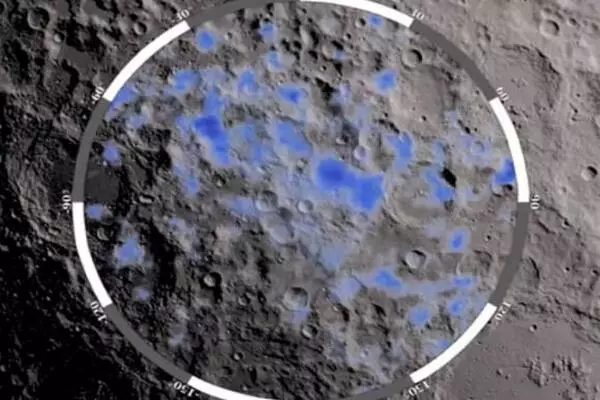
While the Moon does have a tenuous atmosphere that contains elemental oxygen, it is so thin that scientists refer to the Moon as a “airless body.” However, there are abundant amounts of oxygen in lunar rocks and regolith, the fine powder and rocks that cover the surface. This fine dust, also known as “Moondust,” permeates the lunar surface and is the result of billions of years of meteor and comet impacts.
While the catalytic efficiency of lunar soil is lower than that of Earth-based catalysts, Yao says the team is testing different approaches to improve the design, such as melting the lunar soil into a nanostructured high-entropy material, which is a better catalyst.
Previously, scientists proposed a variety of extraterrestrial survival strategies. However, most designs necessitate the use of terrestrial energy sources. For example, NASA’s Perseverance Mars rover carried an instrument that can convert carbon dioxide in the planet’s atmosphere to oxygen, but it is powered by an onboard nuclear battery.
“We will see the crewed spaceflight industry develop rapidly in the near future,” says Yao. “We will enter a ‘Age of Space,’ similar to the ‘Age of Sail’ in the 1600s, when hundreds of ships set sail for the sea. However, if we want to conduct large-scale exploration of the extraterrestrial world, we will need to consider ways to reduce payload, which means relying on as few supplies from Earth as possible and instead relying on extraterrestrial resources.”
This study opens the door not only to someday growing plants in lunar habitats, but also to a slew of other questions. Understanding which genes plants require to adapt to growing in regolith can help us understand how to reduce the stressful nature of lunar soil. Are materials from different areas of the moon better suited to plant growth than others? Could studying lunar regolith help us learn more about Mars regolith and possibly grow plants in it as well? All of these are questions that the team hopes to investigate further in order to help future astronauts travel to the moon.
